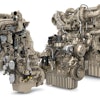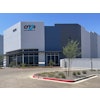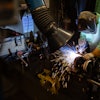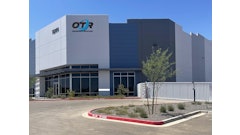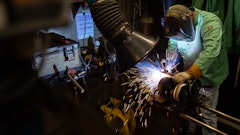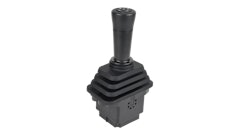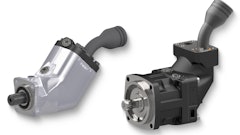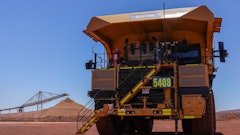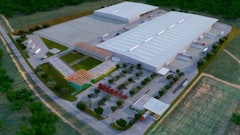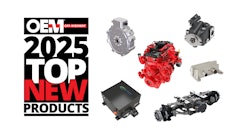For many of us, mowing the lawn was one of the first regular chores we were given. Many people think they have all the knowledge needed to handle mowing equipment. While this may be true of the average homeowner, it is not the reality when it comes to operating industrial or agricultural mowers.
To address the safety concerns of mower manufacturers, the Assn. of Equipment Manufacturers' Industrial/Agricultural Mower Manufacturers Council (IAMMC) developed a video-based training program for operators of large rotary and disc-type mowing equipment.
Safety practices must be followed
The training program is an industry wide response to the needs of municipalities and other local governments, state authorities, user groups, individual employers and the mowing industry as a whole.
'We needed a common safety message that all users of mowing equipment can easily follow and relate to,' says Bill Smith, staff engineer for Alabama-based Bush Hog and chairman of AEM's IAMMC. 'Our aim is for wide use of the program. For example, we've had inquiries from community colleges, municipalities, contractors and others responsible for training mower operators seeking safety training sources.'
While agricultural and industrial uses may involve different types of mowing equipment, the basic safety rules cross over to both, states John Fisher, vice president of technical affairs and safety at Texas-based Alamo/Rhino and the project leader spearheading development of the AEM mower program. The materials are broad-based and aim to complement the traditional machinery manufacturer owner/user manual.
'We've purposely kept the program components generic across all types and models of mowing equipment, whether rotary or disc, and cutting in fields or alongside roads,' Fisher says. 'The key message is that safety practices must be followed.'
The AEM mower program stresses safety for all persons who may be in the vicinity when mowing machines are in use. 'We recognize that automobile drivers, pedestrians, field workers and others often encounter mowing operations, and they should be safe around the equipment as well,' says Smith. 'For example, mowers have been used along highway right-of-ways for many, many years, but as the population has increased and highway usage has grown, safety has become even more critical.'
AEM notes that a key benefit of the new mower safety training program is that it can be used in training new operating personnel as well as in 'refresher' courses for crews, for example, at the start of each mowing season.
According to Fisher, operating a mower is sometimes considered a semi-skilled position done by new hires in a workforce with a rapid turnover. The AEM video addresses the needs of this audience by showing basic safety practices that they should know before operating the equipment.
'In any activity where skills have to be acquired, it's always important to stress the basics and, from time to time, re-learn them. So this video can be shown the first day on the job and the start of each season,' Fisher explains. 'Our industry does everything it can to make the equipment as safe as possible, but how safely the user operates it is the key. We cannot stress safety enough.'
The idea for the video came up in a meeting more than two years ago, after which a request for proposal was sent out to production companies. CVC Communications, Fort Wayne, IN, got the job.
'Once we got started on the project, the mower training task force, a core group of eight member companies met once every two months or so,' says Dan Moss, assistant director, standards and safety services, AEM, Milwaukee, WI. Most of the meetings were held in either the Chicago or Kansas City airport areas, the most central location for the participants. The entire process went very smooth: 'There was a lot of great cooperation between the member companies and the video company's staff.'
Care was taken to ensure all of the different brands of mowers and tractors were given equal air time on the video.
Types of mowers outlined
Basic areas covered in the AEM mower safety video include the different styles of equipment and where each is used.
For example, rotary mowers are designed for pasture clipping, crop residue shredding, heavy brush cutting and road-side maintenance where clippings are usually not picked up. Disc mowers are designed for agricultural use dealing primarily with hay harvesting equipment, where the hay is then gathered into bales. Mowers used in both markets are pulled by tractors from 30 to 150 hp, generally.
The AEM mower program does not cover smaller ride-on and commercial turf-management types of mowing equipment.
----------------------------------------------------------------------------------------------------
Mower knowledge
Safety program serves to educate experienced, novice usersA key component of the AEM mower safety program is a video illustrating several types of mowing equipment being safely operated in a variety of situations. It focuses on basic rules to help ensure the safety of the operator as well as other persons that may be in the vicinity, especially in the case of roadside mowing. Areas covered include start up, shut down, operation and maintenance. A 12-page guidebook highlights key messages in the video. Rounding out the package are safety manuals for agricultural disc mowers and industrial/agricultural mowers. The AEM mower safety training video discusses the operating principles behind tractor-pulled rotary and disc-style mowers, alerts operators to potential hazards during mowing, stresses the need to read the operating manuals supplied with the equipment and makes users aware of safety-alert symbols on the machinery.
Wearing protective equipment, including eye shields, is highlighted, as is a walk-around safety inspection before using the mower. Common sense issues such as not using drugs or alcohol, avoiding loose clothing and tying up long hair are also stressed. Roll-over protection, seat belts, safety shields are also highlighted as is proper cutting heights and how to safely raise and lower the cutting deck.
Because these types of mowers use a PTO, drawbars and hitches, all of which require special consideration, their use is discussed in detail as are mower cutting blades. Tips on how to use and inspect these devices, along with hydraulic lines, are given.
The video also stresses the need to be aware of others who may be near the operating area. Operating on a slope and uneven areas is discussed, as is checking the area for debris that may be thrown by the mower and clearing it before cutting. Finally, constantly checking ahead of the cutting path, and properly getting on and off the machine, are covered.

